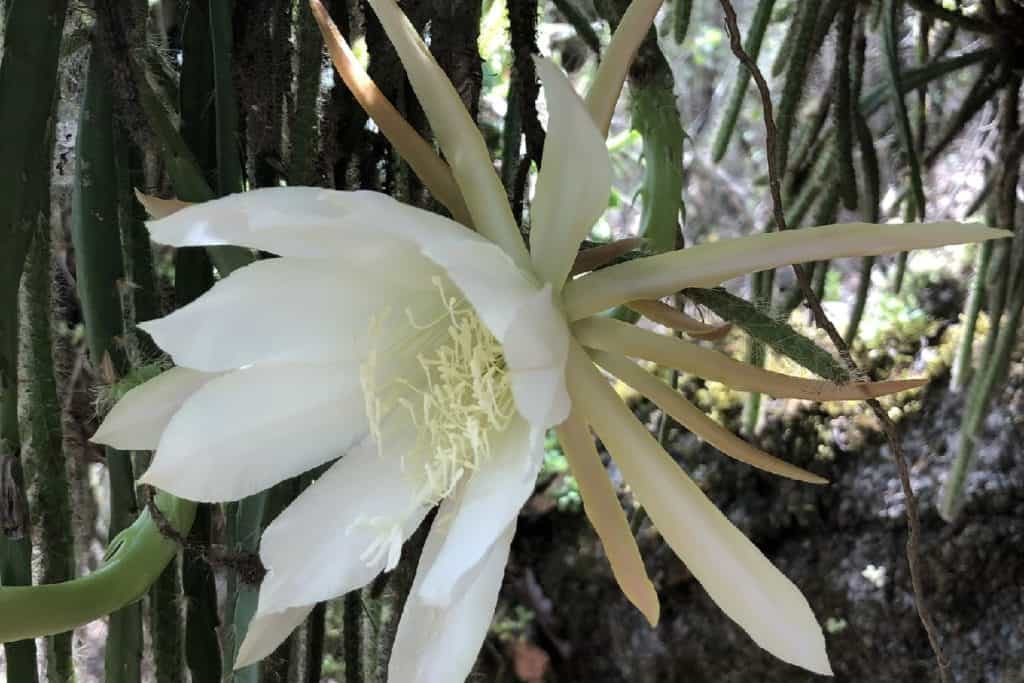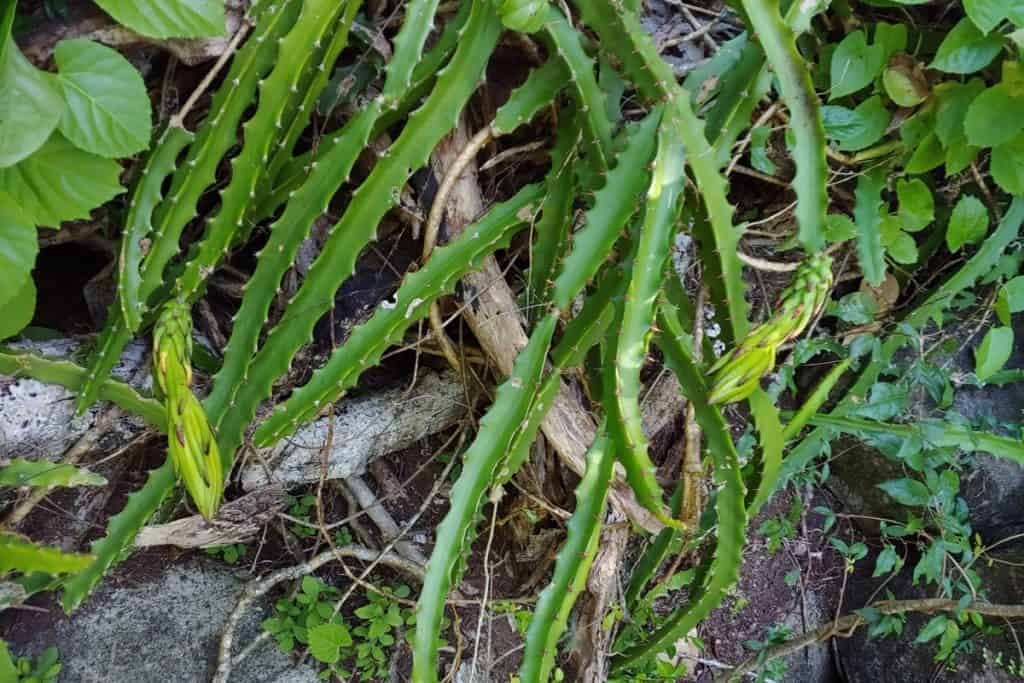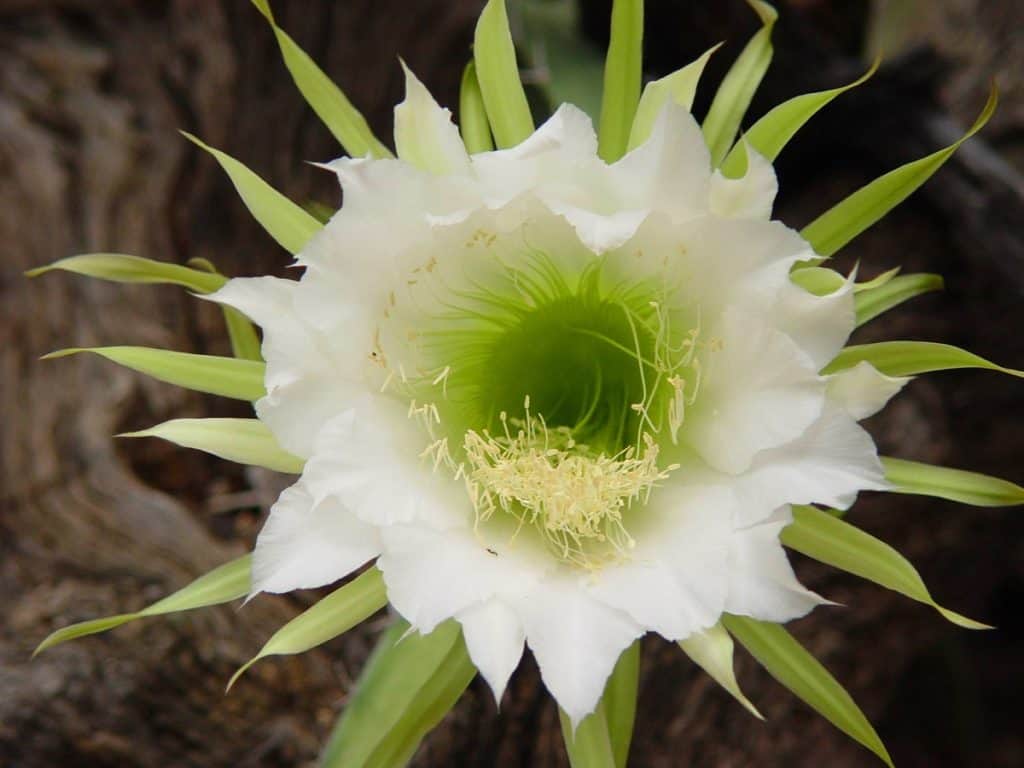Hylocereus triangularis: The Cactus with a Dramatic Nighttime Show
At first glance, it might seem like just another cactus. But wait until you witness the Hylocereus triangularis in full bloom! This Caribbean beauty puts on a spectacular floral display that will leave you awestruck. Enormous white flowers unfurl from the thick, trailing stems, releasing an intoxicating fragrance into the warm night air. It’s a fleeting moment of pure magic that makes growing this exotic cactus utterly worthwhile.
With nicknames like wall okra, Bynes pear, and God okra, the Hylocereus triangularis is truly a one-of-a-kind plant. After its dramatic blooms have faded, it produces fruits reminiscent of dragonfruit, which belongs to the same genus. Whether you’re a seasoned gardener or a cactus newbie, get ready to be captivated by this fascinating addition from the Caribbean.

Contents
About Hylocereus triangularis
Hylocereus triangularis is a striking cactus that boasts thick, long leaves growing downwards and large, fragrant white flowers that unfurl their petals only at night during summer and fall. After the fleeting blooms, it produces fruits similar to dragonfruit, which belongs to the same genus. With nicknames like wall okra, Bynes pear, and God okra, this plant is truly a fascinating addition to any garden.
Related Post:
13 Types Of Hylocereus Cacti [With Pictures]
How to Care for Hylocereus triangularis
Light
This cactus thrives in full sun, especially during its blooming months. However, if temperatures soar above 86°F (30°C), provide some partial shade (around 50-60%) to prevent scorching. If you live in cooler regions, you can use a grow light to mimic the plant’s natural lighting conditions.
Water
Like most cacti, Hylocereus triangularis is drought-tolerant but still requires occasional watering. Water the plant when the soil is dry to the touch, allowing the excess water to drain completely. During the flowering and fruiting season, water every 3-7 days to keep the soil moist. In winter or when it’s not blooming, water once a month.
Soil
Hylocereus triangularis loves well-draining, organic, sandy soil with a slightly acidic pH between 6.1 and 7.5. If you can’t find sandy soil, any well-draining soil mix will do. Avoid alkaline soil, as it can lead to nutrient deficiencies, but don’t worry about some saltiness.

Fertilizer
Feed your night-blooming cactus with an organic fertilizer high in nitrogen during its growing season (monthly). Avoid fertilizing during blooming or winter.
Temperature and Humidity
This tropical plant thrives in temperatures between 59°F and 86°F (15°C and 30°C). Protect it from frost, as it can’t handle temperatures below 40°F (4°C). As for humidity, it prefers moderate levels, but it’s not too fussy.
Pests and Problems
Hylocereus triangularis can fall victim to sap-sucking pests like aphids, mealybugs, mites, and thrips. Ants may also come calling if aphids are present. Keep an eye out for fungal infections (brown spots on the stem) and bacterial soft rot. Root rot and sunburn are other potential issues.
Pruning
As a climbing cactus vine, Hylocereus triangularis needs support while growing. Remove any side branches until the plant is tall enough to reach a trellis. Once it’s there, cut the stem to encourage lateral branching. Prune off dead, diseased, or crowding stems, and those touching the soil.

Potting and Repotting
Plant your night-bloomer in a well-draining, enriched soil mix, providing partial shade as needed. Use a sturdy post-and-top frame to support the heavy stems (up to 250 pounds!). Space seedlings at least 8 inches apart. You can also grow it in a large (at least 15 gallons), well-draining container on a tall post, allowing the stems to hang down. Repot only if the plant outgrows its current home or if you suspect root rot.
Hylocereus triangularis Propagation Methods
The best part? One Hylocereus triangularis plant can produce fruit for 20-30 years! But why stop there? Propagate this beauty to enjoy even more of its dramatic blooms.
From Seeds:
- Cut the fruit in half and scoop out the seeds
- Wash the seeds to remove the flesh, and let them dry overnight
- Plant the seeds close to the soil surface, keeping the soil moist
- Cover with plastic until germination (around 15 days), then transplant
From Cuttings:
- Take a foot-long cutting from a mature plant (not the parent plant) during summer
- Divide it into 3-inch pieces and let them cure for 2-5 days until the tips whiten
- Plant the cured cuttings in soil
With its unique blooming habits and exotic charm, the Hylocereus triangularis is sure to be the star of your garden! Just follow these care tips, and you’ll be rewarded with a dramatic nighttime show like no other.
